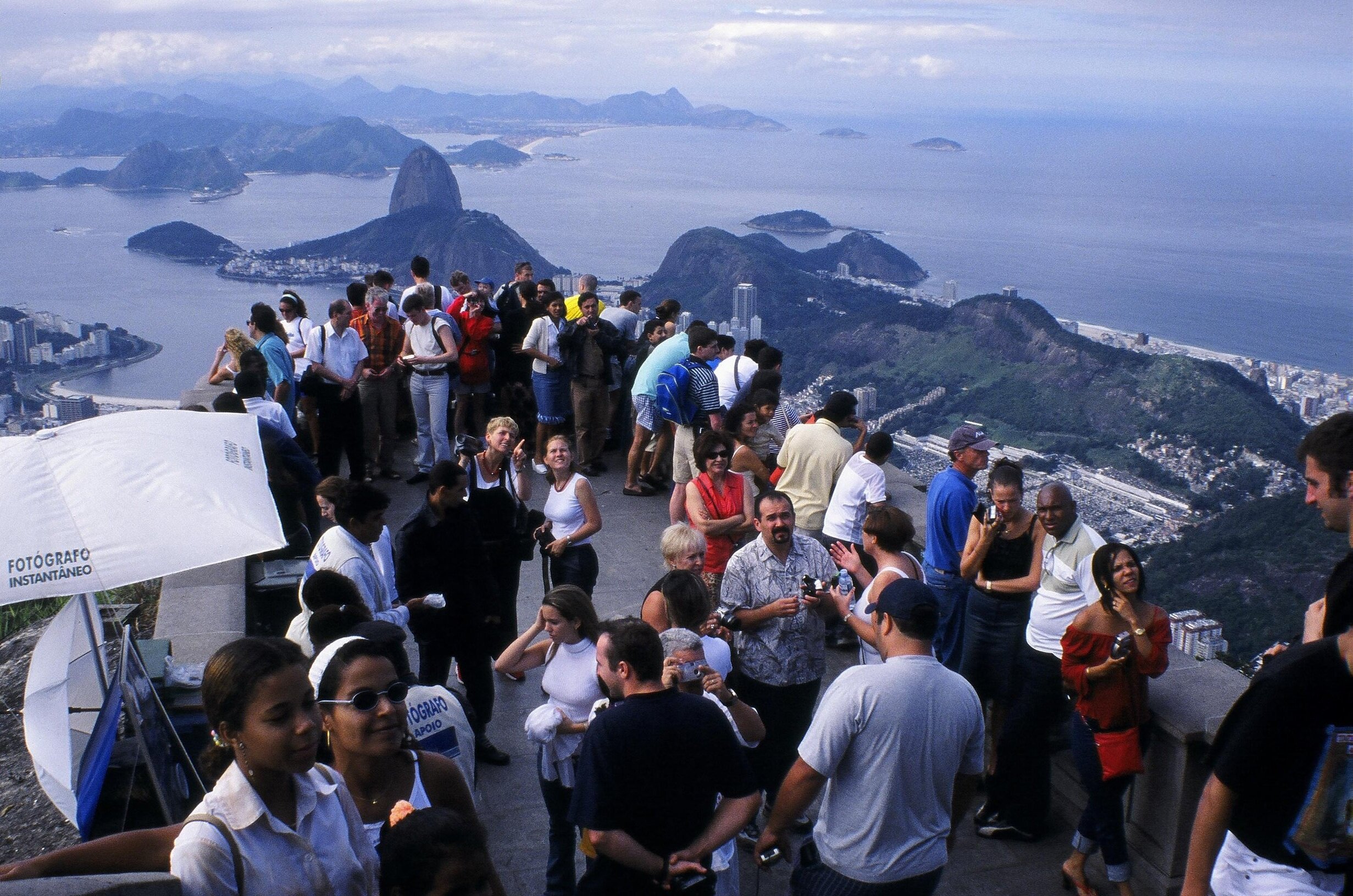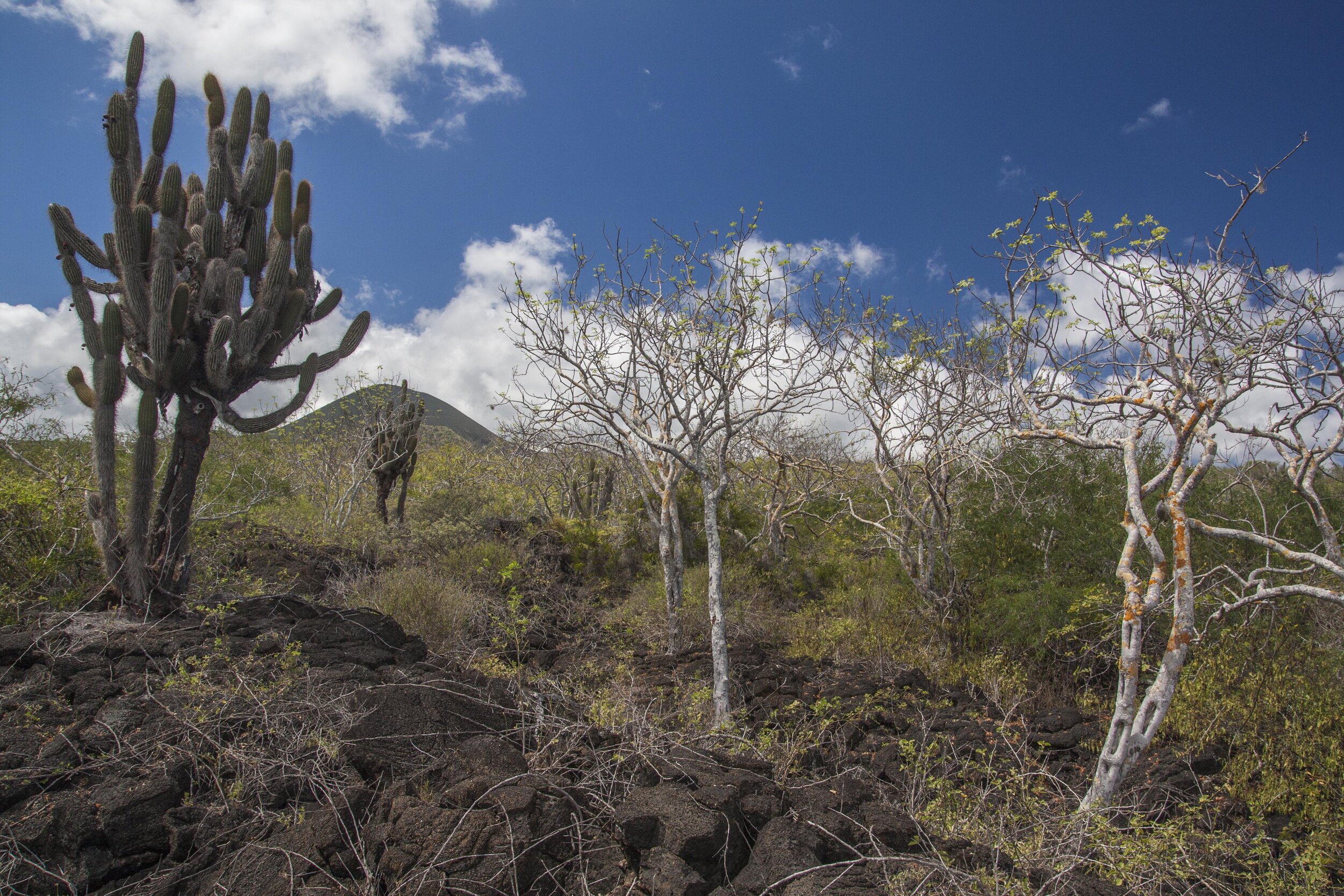Mt. Ngauruhoe is Tongariro’s most iconic volcano and was the stand-in for Mt. Doom in Lord of the Rings. It last erupted in 1975. (The Alpine Crossing winds around the base of the volcano on the opposite side, at a much higher elevation.)
My previous post on San Francisco will be the last one for a while about “urban wilds,” but this one will still deal partly with a human element. Tongariro National Park, in the volcanic central highlands of New Zealand’s North Island, ranges from temperate rainforest to alpine shrubland to barren mountains and lava flows, all mostly surrounded by agricultural land. The full-day Tongariro Alpine Crossing, one of the country’s most popular hikes, passes through the vicinity of recent eruptions (the latest in 2012) and through some of the park’s most dramatic landscapes.
Near the start of the Tongariro Alpine Crossing, just after sunrise.
Reaching the crater rim of Mt. Ngauruhoe (about a one-hour climb, not officially part of the Crossing).
View of the Blue Lake from the summit of Mt. Ngauruhoe.
The Red Crater, at the midpoint of the hike.
The Emerald Lakes. Without the Ngauruhoe side trip I would’ve beat the crowds, but I was actually a little inspired by the way they created their own jarring human-wild juxtaposition—the pedestrian (literally) in the presence of the surreal. The lakes felt “domesticated” in a way that, as I’ve gone into before, I find empowering despite the negative impacts.
In places along the edges of the lakes, the water resembles turquoise smoke.
View back toward the Red Crater and, behind it, Mt. Ngauruhoe.
Beginning the descent toward the end of the hike, from alpine grassland below the lava fields down to forest and farmland.
Hiking the Alpine Crossing and driving along much of the park’s perimeter to and from the trail, I was struck by two contradictory impressions. On one hand was the sharp juxtaposition of the temperate, managed landscape of the park’s surroundings with the wild, inhospitable environment (in both the ecological and geological sense) of the interior. I remember in certain places alpine shrubland on one side of the perimeter road and farmland (presumably former forest) on the other side—it’s very possible I’ve played it up in my mind, but it was as if the transition didn’t even require a perceptible change in elevation. On the other hand, while the beginning and end of the trail do afford views of the park’s exterior (reinforcing the impression of contrast), for most of the hike the place felt like another planet—an exotic, self-contained world. In a sense the second impression reinforced the first by contradicting it, in that my memories of the landscape’s otherworldliness heightened the contrast with its more mundane surroundings when latter came into view again. But in any case the work that resulted from my Tongariro visit—Alpine Crossing—was an initial effort to capture the complexity of how I experienced these relationships between interior and exterior. (I have in mind a second, larger work that would explore this even more deeply.)
Alpine Crossing, watercolor on paper, 23”x20.”
Abstracted route of the day-long Tongariro Alpine Crossing, with each segment described below.
1. Beginning the hike at sunrise in alpine shrubland/grassland that soon gives way to bare gravel and rock.
2. Continuing through the volcanic landscape, approaching Mt. Ngauruhoe.
3. Reaching the summit and snow-filled crater of Mt. Ngaurauhoe, an hour-long climb off the main trail.
4. Descending the mountain again and continuing around the other side.
5. Overlooking and then weaving between the Emerald Lakes.
6. Passing by the Blue Lake.
7. And finally, re-entering the grassland and overlooking the final descent. The last hour or so of the hike passes through rainforest.
This work is conceptually most similar to Andes-inspired Lagoon, even though the latter doesn’t depict a volcano, in that both capture otherworldly islands of nature floating in agricultural landscapes. But while in both cases these ecological/geological islands have been drastically downsized in my mind and on paper—the Alpine Crossing in reality traverses only a small corner of Tongariro—Alpine Crossing reflects my perception of having actually crossed this island from one end to the other. It’s one of my earliest works, but it fits in with my recent emphasis on representing discrete journeys across landscape boundaries and transitions rather than what I call wanderings, or less directed and directional impressions.
Darren
Mt. Ngauruhoe again from the other side, peeking through the clouds at sunrise.


































































































































































